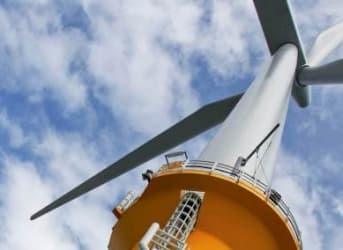Solar power appears to be hitting some technological hurdles, if the slowing rate of innovation in that industry is any indication. This apparent slowdown could well afford the wind sector the ideal opportunity to gain some momentum in the renewables space, spread further across the United States while also attracting more investment.
Currently wind power is generating roughly 5% of the overall power for the country as a whole, and considerably more than that in the Midwest where a lot of wind farms are concentrated. States like Minnesota, Kansas, and Iowa are generating 15 to 30% of their power from wind. Even with current technology, larger states like Texas and California are nearing 10% of their energy generation from wind. Wind power has fully become a mainstream source of electricity, and should no longer be considered a fringe energy source.
But several new innovations in the area have the potential to make wind energy even more viable across the country as a whole. Related: China To Create An Oil Supermajor Twice The Size Of Exxon
First, the US Energy Department sees a new generation of wind turbines coming that will be 100-200 feet taller than current commercial wind turbines. New wind turbines could reach to a height of 460 feet which, in turn, would allow wind farms to take advantage of faster wind speeds that occur at higher elevations. With wind power already present in 39 US states, the new turbines could potentially open up a further 20% of the country to economic wind generation, essentially making wind power viable nationwide.
Second, there is a new type of wind generation equipment that is starting to pick up support. Vortex Bladeless is a start-up wind energy company which aims to upset the traditional wind generation model with a new type of turbine that has no blades and no moving parts of any sort.
The new wind “turbines,” if they can still be called that, look a little like giant straws and they generate power through oscillation of the structure. The new turbines can be spaced together more closely since they lack blades, and the absence of moving parts leads to less wear and tear over time which should lower costs. It would also get around the criticism of traditional turbines as a threat to birds. The company is starting to raise funding, and it’s quite possible that the new turbines could be a common site in a few years. Related: Why Tesla’s Battery’s Won’t Work For Rooftop Solar
On the other end of the spectrum, industrial behemoth General Electric announced a new digital system that it says will boost wind farm energy production by up to 20 percent. The company’s “Digital Wind Farm” will allow wind to better integrate into the existing grid.
A 20 percent efficiency gain is not a trivial figure, and if GE can come close to meeting those claims, then ultimately every wind farm in America would likely use the product.
Let’s look at a back-of-the-envelope calculation of the potential market for GE. There are 50 GW of wind power being installed worldwide currently (plus more in the future of course). Each GW is worth about $50 million a year, and assuming GE used the product in a Software as a Service (SaaS) format, based on value-added pricing at the industry standard of 10%, the technology could yield profits of roughly $250 million annually starting in the first year. Assuming wind power generation grows at 20% per year, in less than eight years, the firm would be generating a billion dollars a year in revenue from the product. Even for GE, that’s substantial. Related: Top 4 Oil Companies For Dividend Investors
GE is not the only way to play the growing momentum in wind power though. Toronto-listed Northern Power Systems is a manufacturer of wind turbines and other equipment and represents a purer play on wind energy.
Wind power is now decidedly a mainstream source of energy. But the sector continues to innovate and achieve technology breakthroughs. For investors, this offers a lot of opportunity.
ADVERTISEMENT
By Michael McDonald of Oilprice.com
More Top Reads From Oilprice.com:
- Midweek Sector Update: Self-Defeating Realities Of The Oil Sector
- Oil Still At Risk Of Geopolitical Turmoil
- Is This The Efficiency Breakthrough Solar Has Been Waiting For?


















